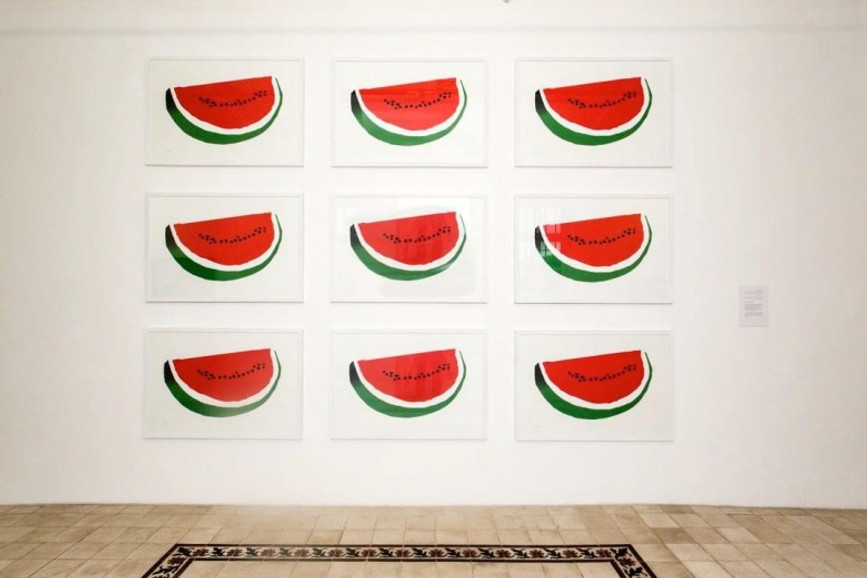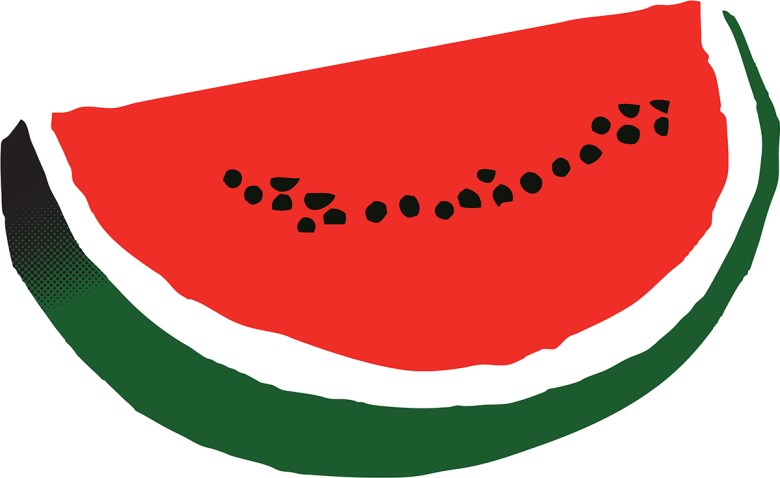
The Watermelon as a Palestinian Symbol: Defiance and Unity
Posted by Mai Wazani on 28th Aug 2024
In the rich tapestry of cultural symbols linked to resistance and identity, the watermelon stands out distinctly in Palestinian narratives. Originally just a summer treat, it has evolved into a powerful symbol of defiance, resilience, and unity amid adversity. This article explores how the watermelon transcended its role as a food item to become a key emblem within the Palestinian resistance.

Historical Roots of the Watermelon in Palestinian Resistance
The transformation of the watermelon into a resistance symbol is deeply entwined with Palestine’s volatile history, notably marked by the Six-Day War in 1967. With the advent of Israeli control over the West Bank and Gaza Strip, and the subsequent ban on the Palestinian flag, the watermelon emerged as an ingenious symbol of silent protest. Its red pulp, black seeds, and green rind closely mimic the Palestinian flag's colors, turning an everyday fruit into a symbol of identity and defiance. Displaying slices of watermelon became a subtle yet profound act of resistance and cultural assertion.
Reflecting on this time, the watermelon not only symbolizes the Palestinian flag but also resilience, unity, and an indomitable spirit in the face of harsh realities.
Artistic Representations of the Watermelon in Palestinian Solidarity
In the realm of art, the watermelon has become a medium through which Palestinian artists express their cultural identity and political statements. Notable works, such as Khaled Hourani's "Watermelon" from the "Subjective Atlas of Palestine," alongside contributions from artists like Sarah Hatahet and Sami Boukhari, illustrate the fruit's role in Palestinian art. These works employ satire, symbolism, and vivid colors, transforming the simple watermelon into a potent symbol of hope and resistance.
The watermelon in these artistic contexts represents more than a subject; it embodies artistic defiance and a rejection of attempts to suppress Palestinian identity and freedoms.
The Watermelon in Digital and Global Realms
As digital communication reshapes interaction and activism, the watermelon symbol has adapted to the virtual landscape. In the context of recent conflicts, social media platforms have utilized watermelon images, emojis, and hashtags as tools to circumvent censorship, ensuring that the message of Palestinian resistance reaches a global audience. This adaptation highlights the innovative ways Palestinians use digital platforms to bolster their voice.
Globally, the watermelon symbol has resonated beyond Palestinian borders, symbolizing solidarity and support for Palestinian self-determination in international protests and digital art.
Conclusion: Beyond Defiance to Unity and Hope
The watermelon is more than a symbol of defiance; it embodies hope, unity, and the enduring spirit of the Palestinian people in their pursuit of self-determination and peace. Its evolution from a household staple to a global symbol of solidarity highlights the impact of cultural symbols in shaping narratives and fostering movements.
The narrative of the watermelon in Palestinian resistance exemplifies creativity, resilience, and the unyielding will of the people. It underscores how symbols, even amid adversity, can unite and inspire, bridging cultures and connecting individuals worldwide in a collective call for justice and freedom.
As we move forward, the watermelon continues to be a poignant reminder of the ongoing struggle for Palestinian identity and sovereignty, symbolizing hope for a future where cultural emblems promote unity and understanding, not just resistance.

